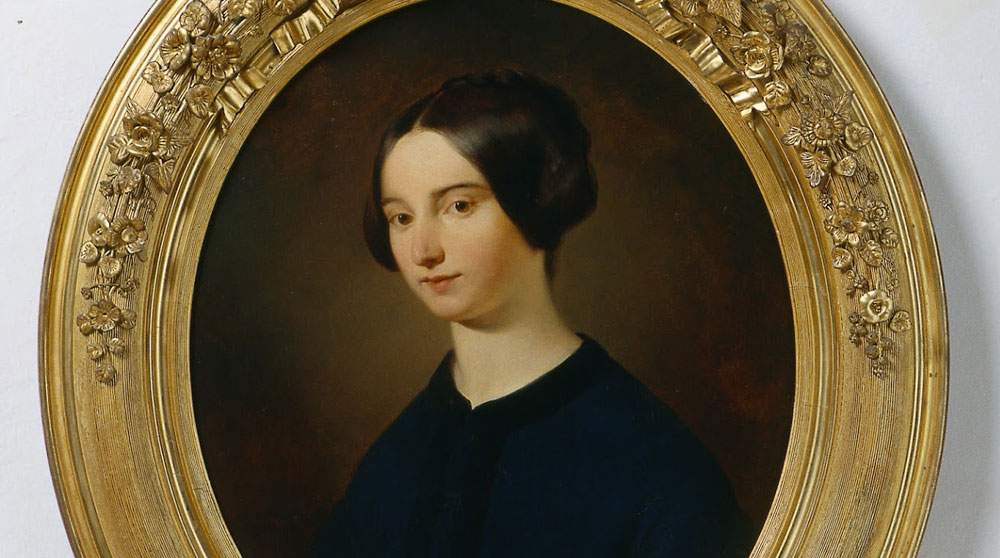At the Estense Gallery in Modena, the female painting of a 19th-century noblewoman
The cycle of dossier exhibitions dedicated to female painting in early 19th-century Modena kicks off again at the Galleria Estense in Modena: from February 15 to May 2, 2021, the museum venue will host the exhibition Una pittura femminile piccola piccola. Anna Campori Seghizzi and Her Time, from an idea by Martina Bagnoli and curated by Gianfranco Ferlisi. The exhibition starts from an analysis of some of the lesser-known works in the museum’s collections to explore the theme of the female condition of that era. In fact, the paintings of a Modenese noblewoman who, due to rank and gender, could only practice painting in an amateur manner, producing mostly precious miniatures on ivory, Anna Campori Seghizzi (1781-1821), will be on display. Accompanying her works are those of Maria Theresa Beatrice of Austria d’Este of Chambord (1817-1886), who, in the court’s domestic atelier, devoted much attention to the same activity.
“With this exhibition we explore a little-visited but fascinating corner of our collections,” declares Martina Bagnoli, director of the Estense Galleries. “Anna Campori’s miniatures are a poignant document of filial love and female solidarity. Anna lived in a society that did not allow her to live her artistic talent as a protagonist, a talent that today thanks to the legacy of her daughter Giulia we are able to recognize and celebrate.”
The works of Anna Campori, daughter of Giuseppe, 7th Marquis of Soliera, that is, thirty-seven miniatures created on ivory, which arrived in the Estense collection thanks to the bequest of her daughter Giulia Seghizzi Coccapani Imperiali (1807-1895), will be on public view together with two portraits by Adeodato Malatesta(Portrait of Marquise Anna Campori Seghizzi and Portrait of Marquise Giulia Seghizzi Coccapani Imperiali) that will allow the public to get to know mother and daughter and theintimate bond that bound them together. Giulia not only left her mother Anna’s paintings to the Estense Gallery, but also commissioned her posthumous portrait to the famous painter from Modena, who used one of the miniatures of the painter who died prematurely to execute it. This reversed the relationship of dependence between amateurs and masters that usually saw young aristocrats engage in copying the great artists of the past, as Anna Campori does with her interpretation of Francesco Vellani’s Four Seasons. Alongside the miniatures and portraits, two very rare works by Maria Teresa of Austria d’Este (the daughter of the Duke of Modena) kept at the Estense Gallery will also be on display, especially her interpretation of Saint Francis of Assisi in adoration of the Crucifix, copied by Elisabetta Sirani. Even in the domestic atelier of the Estense court, in fact, he painted with commitment. Bernardino Rossi’s large canvas depicting The Family of Francesco IV d’Este illustrates the details, showing Maria Teresa in front of the easel while portraying her sister, Maria Beatrice Anna (1824-1906). The theme and the artists offered in the exhibition take the visitor to the threshold of the 19th century, to a time when noblewomen, whatever their talents and inclinations, were primarily required to be graceful, to be gracious, to know how to dance, to converse in several languages, to embroider, and even to dabble in painting. Anna Campori’s careful, meticulous, and inspired miniatures, however, hint at a passion and commitment to the art of painting that this review aims to explore.
Anna Campori practiced the art of miniature painting in the golden age of this genre, between 1775 and 1825. The Modenese discovered the brilliance of pictorial rendering on the ivory surface: the use of tempera on ivory allowed the various layers of color to take on a transparent and luminous effect. On the ivory plate it was necessary to apply, by means of highly adhesive animal glues, two or three layers of paper as a preparation of the support. A technique highlighted by restoration work, which affected almost all the miniatures in the late 1980s. It was precisely these restorations that also uncovered the painter’s expressive qualities and restored the importance of the amateur dimension of the aesthetic experience of the early 19th century.
For info: www.gallerie-estensi.beniculturali.it
Image: Adeodato Malatesta, Portrait of Marchesa Anna Campori Seghizzi
 |
| At the Estense Gallery in Modena, the female painting of a 19th-century noblewoman |
Warning: the translation into English of the original Italian article was created using automatic tools. We undertake to review all articles, but we do not guarantee the total absence of inaccuracies in the translation due to the program. You can find the original by clicking on the ITA button. If you find any mistake,please contact us.





























